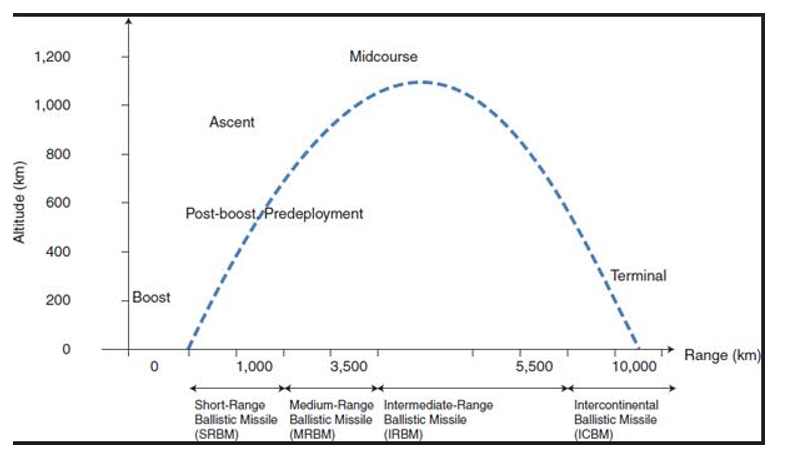Mission Shakti: How the ASAT tests put India in a different league strategically
- In Military & Strategic Affairs
- 12:42 AM, Apr 02, 2019
- Kishor Narayan,Mohal Joshi
India & the rest of the world was taken by surprise by the sudden announcement by PM Modi on live TV that on March 27th India had conducted an ASAT test. With this India just became the 4th nation in the world (after US, Russia & China) to have conducted such a test.
What is ASAT?
ASAT (Anti Satellite) are weapons which destroy or incapacitate satellites orbiting in space. This can be used to hamper and/or disable the enemy communication & reconnaissance infrastructure. This would leave the opponent “blind” making them vulnerable to attacks from the aggressor nation. While USA & Russia have conducted such tests since few decades China just conducted a test in 2007. The test involved China destroying its own weather satellite at a height of 850+km which created more than 3,000 pieces of space debris which created a massive problem for other satellites at that altitude & inviting worldwide condemnation.
What is the history behind the ASAT program & how did it evolve?
For taking a look back at the ASAT program one has to take a look at the BMD (Ballistic Missile Defence) program first. This is a system which is used to detect, track, intercept & destroy or incapacitate incoming ballistic missiles.
After the 1999 Kargil War India due to the fear of a nuclear escalation with Pakistan in the future wanted to purchase an ABM (Anti-Ballistic missile) system. India made inquiries about purchasing the Israeli Arrow interceptor system. USA being one of the main partners in the system refused to allow Israel to India citing that it would violate the MTCR (Missile Technology Control Regime). This blocking of sale to India led it to begin early development of an indigenous ABM system. India was however able to acquire couple of the Green Pine Long Range tracking Radars which are part of the ABM system.
DRDO (Defence Research & Development Organization) developed the Swordfish Long Range Tracking Radar of the Indian Defence Research and Development Organization which is an acknowledged derivative of the Green Pine. Swordfish Long-Range Tracking Radar (LRTR) has a range of up to 800 km and can scan and can reportedly track 200 targets (the size of a tennis ball). In parallel India developed a 2 tier BMD (Ballistic Missile Shield) with the PAD (Prithvi Air Defence) & AAD (Advanced Air Defence) systems. While the PAD was to be used for exo-atmospheric interception at an altitude up to 80-85 km the AAD was to be used for endo atmospheric interception up to 30 km. i.e. while the PAD was supposed to provide high-altitude interception during a missile’s midcourse phase, AAD was to provide low-altitude interception in the terminal phase of their missiles trajectory. Later on a new ABM interceptor called the PDV (Prithvi Defence Vehicle) (which replaces the PAD) was introduced which was now capable of destroying targets at an altitude of up to 150 km.
Missiles usually (as shown below) follow a parabolic path where once fired they go up to the highest point called the apogee after which they fall back down towards the target. The speed of the missile near the apogee is relatively slower after which under the effect of gravity it increases during the terminal phase of its path. The goal is to intercept the target close to the apogee or near it when the speed is relatively slower as it would become more difficult to intercept it during its terminal phase when it is travelling at a faster speed.

Image courtesy of nap.edu
So what happened on March 27th?
A derivative of this PDV (Prtihvi Defence Vehicle) was used on March 27th to destroy an Indian satellite (believed to be MicroSat-R) at an altitude of 300km. The mode of destroying the target was with a “Hit to Kill” mechanism. The PDV variant used for this test had 2 stages with solid rocket fuel & the third stage was the KKV (Kinetic Kill Vehicle) used to destroy the target satellite.
To put into perspective on how much accuracy & precision is required to hit the satellite consider the following facts. At 300 k.m. satellite was a LEO (low earth orbit satellite) travels at approximately little over 8km/second. So even if the targeting is off by 10 milliseconds you would miss the target by 80 meters!
In an exclusive interview to ANI, DRDO Chairman G Satheesh Reddy when asked about the reason behind choosing a 300 km-altitude range for the target, said that protecting nearby space assets had to be considered. "As a responsible nation, we wanted to be sure all space assets were safe and all the debris decayed fast," added Reddy. As opposed to the Chinese test we were looking to avoid creating a significant amount of space debris post the “hit to kill” test to avoid danger to other satellites at that altitude. The dangers of space debris from an ASAT test which can quickly multiply to become out of control have been shown well in a fictional scenario in the movie “Gravity” released in 2013 starring Sandra Bullock & George Clooney.
The A-SAT missile had capabilities of targeting all 'Low-Earth Orbit' satellites. "It has a range of upto a 1000 Kilometres plus," revealed Reddy to ANI. He added that "The missile has technologies developed for ballistic missile defence applications, particularly the kill vehicle,"
In a statement, India’s Ministry of External Affairs said, “This was a technological mission carried out by DRDO. The satellite used in the mission was one of India’s existing satellites operating in lower orbit. The test was fully successful and achieved all parameters as per plans. The test required an extremely high degree of precision and technical capability. The significance of the test is that India has tested and successfully demonstrated its capability to interdict and intercept a satellite in outer space based on complete indigenous technology. With this test, India joins an exclusive group of space faring nations consisting of USA, Russia and China.”
Does this mean that India entering into an arms race in outer space?
Again as per official press release from the MEA
1. India has no intention of entering into an arms race in outer space. We have always maintained that space must be used only for peaceful purposes. We are against the weaponization of Outer Space and support international efforts to reinforce the safety and security of space based assets.
2. India believes that Outer space is the common heritage of humankind and it is the responsibility of all space-faring nations to preserve and promote the benefits flowing from advances made in space technology and its applications for all.
3. India is a party to all the major international treaties relating to Outer Space. India already implements a number of Transparency and Confidence Building Measures(TCBMs) – including registering space objects with the UN register, prelaunch notifications, measures in harmony with the UN Space Mitigation Guidelines, participation in Inter Agency Space Debris Coordination (IADC) activities with regard to space debris management, undertaking SOPA (Space Object Proximity Awareness and COLA (Collision Avoidance) Analysis and numerous international cooperation activities, including hosting the UN affiliated Centre for Space and Science Technology Education in Asia and Pacific. India has been participating in all sessions of the UN Committee on the Peaceful Uses of Outer Space.
4. India supported UNGA resolution 69/32 on No First Placement of Weapons on Outer Space. We see the No First Placement of weapons in outer space as only an interim step and not a substitute for concluding substantive legal measures to ensure the prevention of an arms race in outer space, which should continue to be a priority for the international community.
5. India supports the substantive consideration of the issue of Prevention of an Arms Race in Outer Space (PAROS) in the Conference on Disarmament where it has been on the agenda since 1982.
What is the international law on weapons in outer space?
1. The principal international Treaty on space is the 1967 Outer Space Treaty. India is a signatory to this treaty, and ratified it in 1982. The Outer Space Treaty prohibits only weapons of mass destruction in outer space, not ordinary weapons.
2. India expects to play a role in the future in the drafting of international law on prevention of an arms race in outer space including inter alia on the prevention of the placement of weapons in outer space in its capacity as a major space faring nation with proven space technology.
3. India is not in violation of any international law or Treaty to which it is a Party or any national obligation
Raji Pillai says in an article “India cannot avoid the increasing militarization of outer space and ignoring this reality will only hurt India’s security interests”. This is eerily similar to the situation during 1996-98 in which India found itself racing against time to conduct nuclear tests. Let me take you to the situation then and explain how it panned out. During negotiations, India found the reality had changed in the neighbourhood. Pak had bombs in the basement (hush hush) whereas China already had an arsenal. India remained part of CTBT (Comprehensive Test Ban Treaty) negotiations in Geneva until the eleventh hour. What happened back then?
“Entry into force” Treaty remains in limbo until countries sign & ratify. Negotiators said that over 40 countries should Sign & Ratify and this should include all the nuclear powers (both de jure & de facto) India felt that this was a forced constraint on its sovereign rights & walked away having 2 complaints: 1. This won’t lead to a universal nuclear disarmament 2. Discriminatory on India. However, India has also cleared the confusion and said that it will not stand in the way of “entry into force” of the CTBT
However, a bigger factor was being played out during this time. Mid 1995 saw talks about NPT (Non Proliferation of Nuclear Weapons Treaty) being extended indefinitely. Remember India always believed that NPT itself was a flawed treaty splitting the world into 2 categories of countries: “nuclear haves” and “nuclear have-nots”. Countries like US who wanted this to happen saw India as an outlier. President Clinton prevailed on the then Indian government led by then PM P V Narasimha Rao to not go for yet another rounds of nuclear tests. This was followed by political instability during the 1996-1998 period. When Atal Bihar Vajpayee led NDA govt. came into power in March 1998, India realised that time was running out before CTBT would become a reality (already signed but yet to come into effect) and would be forced down its throat. So, they agreed to bite the bullet and in May 1998, India announced to the world that they had conducted nuclear tests and imposed a unilateral moratorium on itself. There have been 3 governments after that and none of them have felt the need to violate the self-imposed moratorium.
Many critics have argue that this test was hurriedly done for vested reasons approval for the test & other controversies?
DRDO Chairman Sateesh Reddy said that the clearance for this test was given in 2017. They went into mission mode 6 months ago. The “target” satellite for this test has been reported to be the Microsat-R which was not some old end of life satellite but it had been launched just 2 months ago on Jan 24, 2019! This shows that wheels for this test had been set in motion from some time & it didn’t happen overnight as many would like to believe.
Regarding the approval of the test Defence journalist Shiv Aroor in an interview posted on LiveFist in 2010 had Dr Avinash Chander, [then director of India’s Advanced Systems Laboratory (ASL)], stating on record that “if the government calls upon DRDO to deliver such a weapon, it would take less than three years to first test.” Dr Chander further added “We have developed technology blocks that can be integrated to create an anti-satellite weapon. What we need is the technology to boost the munition into space, which we have proven very robustly with the Agni programme. And we need a kill vehicle of considerable energy and terminal phase accuracy, which our scientists have proven with the advanced air defence (AAD) interceptor tests. We can put these blocks together and fine tune the weapon as an anti-satellite platform. If we are required to, we can deliver this.”
Now the controversy regarding what former DRDO chief Dr Sarawat is a bit curious. He said after the test a few days ago to the effect that after India had carried out the Agni-V capability demonstration he made presentations to UPA government including then defence ministers AK Antony and then National Security Advisor Shivshankar Menon (something which Menon has denied) to give clearance for the test which he never got. But in 2010 he told LiveFist that “we already have a design study of such a weapon, but at this stage the country does not require such a platform in its strategic arsenal. Testing such a weapon also has a lot of repercussions which have to be taken into consideration. But testing is not an issue — we can always rely on simulations and ground test. We can see in the future if the government wants such a weapon. If so, our scientists are fully ready to deliver it.” The earlier statement from 2010 seems to be at odds with statement in 2019 which is interesting for sure. This has broken into a “he said” vs “he said” fight which only with the passage of time we will know for sure who is telling the truth.
However what is undeniable in this controversy that current NSA (National Security Advisor) Ajit Doval & PM Narendra Modi did give the approval for the test to proceed.
One more difference to note is that India did have this capacity a decade ago but chose to not exercise it for whatever reason. This allowed time for it to develop a partly indigenous IIR (Imaging Infrared) seeker vs using a RF (Radio Frequency) seeker back then & a new more agile (KKV) kinetic kill vehicle which would make a difference in the interception success.
What is importance of this ASAT test?
Many defence analysts including Saurav Jha & Yusuf Unjhawala have said that the importance of the ASAT test is on the same level as the 1998 Pokhran nuclear tests. ASAT is not a conventional weapon to be used in a war but rather a strategic weapon like nuclear weapons for deterrence. The adversary might want to “blind/incapacitate” you by taking out your satellites but he knows now that you can return the favour by taking out his satellites also. What India has done is capability demonstration which would send a signal to China which already possess this capability & would now have to take notice. Space is now a strategic domain with the proliferation of information & data sharing between various elements of the armed forces in the C4ISR domain (Command, Control, Communications, Computer, Intelligence, Surveillance, and Reconnaissance). This deterrence capacity is useful to guarantee some sort of protection of one’s own space assets versus the adversaries.
Now does this mean you can take out all of the enemy’s satellites? The answer is no as most the communication satellites are in medium to high orbits more than 1,000 km about the earth including upto 36,000k.m. For the geostationary satellites. LEO satellites which are used for electro optical imaging, intelligence gathering, remote sensing & reconnaissance would be under threat from ASAT.
Understand the context in which this ASAT test has been conducted. It is no different from the NPT/CTBT noose that the incumbents attempted to put round India's neck in the lead up to 1998. A Space NPT has been in the offing & they were trying to parcel India with it.
The BMD aspect of this test should also not be overlooked. Some have argued that this is less about bringing down satellites and more about proving exo-atmospheric interception at extremely high altitudes. We have already shown ability to do exo-atmospheric interception of MRBM (Medium Range Ballistic Missiles). Next step is to further refine our capabilities to next intercept even higher range of missiles: IRBM (Intermediate Range Ballistic Missile) & possibly ICBM (Inter Continental Ballistic Missile) after that. These longer range missiles with very high apogees & parabolic paths would mean that we have to test our capabilities for interception of missiles at extremely high altitudes.
Note: This was originally discussed on Episode 16 of the India rising podcast hosted by Mohal Joshi & Kishor Narayan
Link: https://youtu.be/w_GBoHy5EX0
REFERENCES
https://www.orfonline.org/expert-speak/indias-asat-test-further-steps-49340/
https://www.livefistdefence.com/2010/02/indias-asat-concept-hybrid-of-agni-and.html
http://delhidefencereview.com/2017/02/25/hit-kill-successfully-demonstrated-drdos-pdv-interceptor/







Comments